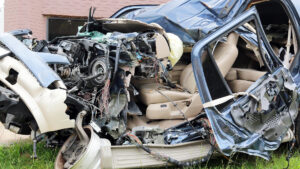Dallas Car Wreck Lawyer
If you’ve ever been in a car accident or some other personal injury matter, and you hired an attorney to represent you, than most likely, he or she used the term negligence. You probably thought to yourself, what is negligence? More importantly, you may have even wondered, how do you prove negligence?
Lawyers define negligence as the failure to exercise reasonable care. But what does that mean in everyday language. Put simply, negligence is causing harm to another person because of the failure to act safely. And to prove negligence, you have to prove four elements:
- Duty – The defendant owed you a duty to act safely;
- Breach – The defendant failed to act safely;
- Causation – The defendant’s unsafe behavior caused your injury, and;
- Damages – As a result of his unsafe behavior you suffered damages.
Let’s briefly breakdown each element of negligence and assume this is a car accident case.
A duty is an obligation owed by one person to another person or group of people to safely. For example, everyone has a duty to drive his or her vehicles safely. Other examples include duties owed by storeowners to maintain safety for their patrons or doctors to perform their duties safely.
After it’s established that the defendant had a duty to drive safely, the attorney must show that the defendant failed to drive safely. The attorney would therefore have to find out what happened at the scene of the accident. The attorney can use circumstantial or direct evidence to prove this breach of duty in court.
The defendant’s unsafe driving must have caused your injury. If the defendant’s unsafe driving did not cause your injury, then there is no negligence. Another way to say this is whether the injury would not have occurred but for some act on the defendant’s part. Hence, if the injury would have occurred regardless of the defendant’s driving, then he or she is not liable to you. Additionally, you must show that the breach was the “proximate” or legal cause of your injury. This means the injury must have been a natural and probable consequence of the defendant’s unsafe driving, and it was reasonably foreseeable in light of the circumstances.
Lastly, you need to prove that the defendant’s unsafe driving caused your damages or injuries because if there is no injury, there is no negligence. There must be some harm in order to recover damages in negligence. The harm can be mental, physical, financial, or even harm to intimate relationships. In conclusion, if you can prove the above elements, you have a good chance of winning your case.






